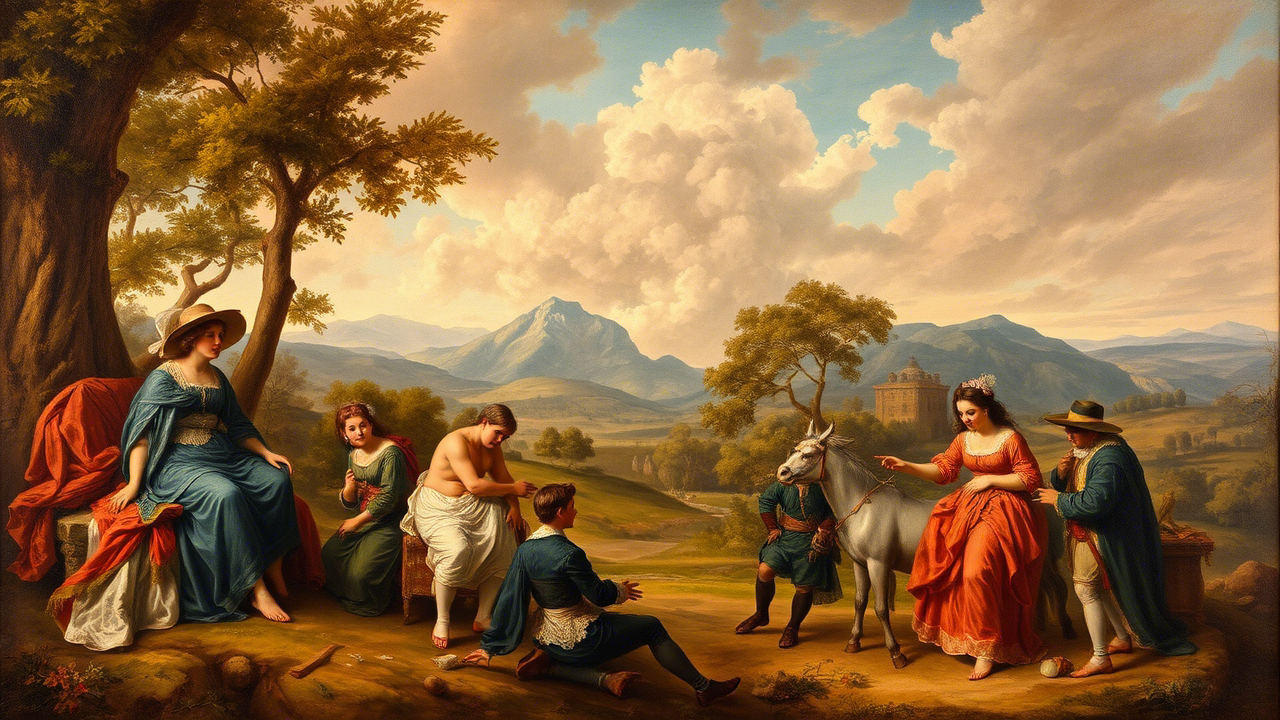Symbolism and Its Influence

Symbolism Art
Oil on canvas, 95 × 85 cm
Symbolism emerged as a reaction against realism and naturalism, embracing the power of imagination and emotion. Artists in this movement sought to depict not the visible world, but the inner world of dreams, mysticism, and symbolism.
The Core of Symbolism
Symbolist artists aimed to convey abstract concepts through rich imagery and poetic themes. The movement emphasized:
- Depictions of dreams, fantasy, and spirituality
- Use of symbolic imagery to convey deeper meanings
- Focus on the emotional and subconscious aspects of experience
- Exploration of mysticism, the supernatural, and existential themes
Influence on Later Movements
Symbolism had a profound impact on later art movements, particularly Surrealism and Expressionism. Its focus on the unconscious and the symbolic resonated with artists exploring the hidden depths of the mind. Many artists in the 20th century, including Salvador Dalí and René Magritte, drew heavily from Symbolist themes, incorporating dreamlike imagery and metaphysical concepts into their works.
The movement's emphasis on abstraction and personal expression influenced the direction of modern art. It became a catalyst for the exploration of psychological depth, allowing artists to break away from the constraints of realism and delve into the world of the intangible. This shift opened new avenues for creativity, and Symbolism’s spirit can still be seen in contemporary art today.
The use of symbols to express complex ideas and emotions has been a lasting influence on art and literature. Symbolists often portrayed themes of alienation, desire, and existential questions, offering a window into the artists' inner worlds. These themes resonated deeply with audiences during times of social upheaval and continue to captivate viewers seeking to explore the more profound aspects of human existence.
In addition to its influence on visual art, Symbolism also made its mark on literature and music. Writers such as Stéphane Mallarmé and Arthur Rimbaud captured the essence of Symbolism in their poetry, employing dense, metaphorical language that mirrored the visual complexity of Symbolist art. Composers like Claude Debussy were also influenced by the movement, incorporating Symbolist ideals into their compositions.
Symbolism played a pivotal role in the breakdown of traditional artistic conventions. It encouraged artists to explore their subjective experiences and personal interpretations of reality. This shift laid the groundwork for future avant-garde movements, such as Cubism and Futurism, which would further challenge conventional norms in art.
Despite its relatively short period of prominence, Symbolism's influence can still be observed in a variety of contemporary art forms. Modern filmmakers, photographers, and digital artists often evoke Symbolist themes, incorporating surreal and metaphorical imagery to convey deeper meanings. The movement's exploration of dreams, mythology, and the unconscious continues to inspire and inform creative practices across multiple disciplines.
Symbolism’s emphasis on emotional intensity and personal experience also influenced psychological theory. The exploration of unconscious desires and dreams paralleled the early work of psychoanalysts such as Sigmund Freud and Carl Jung. Their theories on the unconscious mind, dreams, and archetypes further solidified the connection between Symbolist art and the inner workings of the human psyche.
The enduring appeal of Symbolism lies in its ability to convey the complexities of human emotion and thought. The movement's exploration of the unseen world, the metaphysical, and the irrational provides a sense of mystery and intrigue that continues to attract those who are drawn to the unknown. It invites the viewer or reader to engage with art on a deeper, more personal level.
In the visual arts, Symbolism paved the way for the rise of abstract art. The rejection of realism and the embrace of symbolic imagery were crucial steps in the development of art movements that would seek to represent reality not through direct observation, but through an exploration of form, color, and texture.
Today, Symbolism stands as a powerful testament to the importance of individual expression and the exploration of the inner world. Its impact on the arts and culture is undeniable, and its legacy continues to inspire artists, writers, and creators across the world. The movement's exploration of the intangible, the dreamlike, and the mysterious will always remain a captivating aspect of the human creative journey.